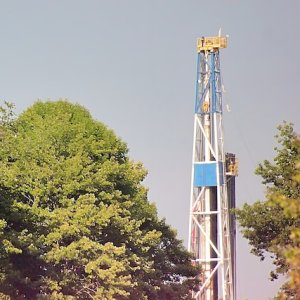Renewables Plus Storage Equals a Strong Value Proposition

STORY INLINE POST
Q: What is the story of Dynapower and its work in Mexico?
A: Dynapower has been operating since 1963, focusing mostly on industrial-sized rectifiers and transformers. The company focuses on energy storage power electronics (bidirectional inverters and DC-DC converters). It has four product supply divisions: industrial and high power for the mining industry are the first two. We also have a military division in the US. Our fourth division is energy storage, which dates back to 2007, when the industry was getting started in the US. Most of our early on competitors have been either gone out of business or have been acquired by bigger parties, with new bigger players entering the market.
Dynapower early on was the energy storage inverter ODM for Tesla’s Power Pack system. Their globally successful Powerpack initiative was deployed in more than 30 countries, for instance. Dynapower has many projects in the US but deploys its solutions in many markets worldwide. In Mexico, the company provides many power electronics, such as inverters and DC converters. I joined Dynapower earlier this year because of my experience in companies in Latin America, primarily here in Mexico. We are working on one project for Grupo Bimbo in Mexico. It is a microgrid project, useful for industrial companies looking to get through a power outage without having to halt production. Mexico is important to Dynapower because it represents our second-biggest market, behind the US for behind the meter C&I projects. Due to our expertise in power electronics, many of our projects are tied to renewables, mostly solar and wind.
Q: What are the characteristics of the storage system for Grupo Bimbo?
A: It is a 1MW/1MWh backup system for Grupo Bimbo’s factory in Atitalaquia near Tula located in the State of Mexico. Essentially, it provides backup power when a power outage occurs in the factory. It helps them reduce their energy consumption too, especially during high peak demand. The system is designed to monitor consumption and discharge the batteries when needed so that Grupo Bimbo can consume less from the grid. The Samsung SDI batteries are recharged during the night, when energy prices are cheaper.
Q: How is Dynapower able to provide value for renewable energy producers through storage?
A: We have an install base of more than 750MW and 150 plus projects with most projects paired to renewables (Solar and Wind). Due to changes in regulations in Mexico, these renewable energy project, many of them from the 3 successful government auctions (~6GW) are required to have some sort of offset to reduce their curtailment and provide grid services to balance the grid from renewable intermittent generation sources. If they aim to operate in an area where the node is already saturated, they can do so with storage. The other aspect of it is related to the renewable developer’s revenue stream. The energy storage market in Mexico is opening up, especially for providing ancillary grid services. This could be an additional revenue stream for the power producer, in addition to its PPA, as this energy could be sold on the Wholesale Electricity Market (WEM).
Furthermore, we have software partners that can leverage the additional revenue streams through their interfaces. They can access the electricity markets to sell such ancillary grid services to the energy spot market. It is therefore not just hardware and batteries but also services.
Q: Most of the company’s storage solutions focus on lithium-ion based batteries. What is the reason behind this preference?
A: Dynapower is battery-agnostic. This means we can work with lead-acid batteries, lithium-ion, flow batteries and more. Recently, hydrogen storage has become a trend, which we use our DC-DC converters as part of the electrolizer process. Lithium-ion batteries dominate the energy storage market because of its price. This price is not necessarily driven by the increasing demand of energy storage but to the increase demand in the number of electric vehicles. The same cells that are used in these vehicles are used in storage. If you look at Tier 1 battery manufacturers such as Samsung SDI, CATL, BYD, or LG, they can leverage two markets to reduce the price on their lithium-ion battery cell technology they produce due to increased volume. This reduced cost is a major incentive for developers and EPCs. In microgrids, where you would ideally have six to 10-hour storage capability, technologies like flow batteries start to look more appealing because of their price for long duration applications.
Q: What would be the aggregate value of battery storage solutions in Mexico’s commercial and industrial environment?
A: The value proposition of what we call “behind the meter” space for commercial and industrial parties is the reliability and quality of power. We have to understand that in Mexico, there is only one utility (CFE) with a majority stake. This is why auctions spur the development for renewable energies and meet the demand of increasing industrial infrastructure. Other than meeting this energy demand, the quality of energy provided is also important. For example, an energy storage system that is tied to a distributed generation asset becomes valuable. These two complement each other very well. The ability to operate a virtual power plant to provide your own energy and sell the excess energy to the market adds further value.
Q: What is holding back the adoption of these storage systems in Mexico?
A: There are two main factors. First, the learning curve on the customer side. They are becoming aware that such solutions exist and how their business could benefit from them. Second, the Mexican regulatory agency CRE has not defined the prices in Mexico’s spot energy market for ancillary services like frequency regulation. Once they define this, then you will have more companies wanting to add storage to their portfolio in order to participate in the market and increase their revenue streams.
Q: What is the company’s sales projection regarding storage in the short term in Mexico?
A: Once the regulatory agency defines the prices for ancillary grid services, I would expect the energy storage trend to increase for projects in Mexico. As prices come down on lithium-ion batteries because of the increased volume of their use in electric vehicles and energy storage projects, it will become more interesting to developers. We can see this trend already starting in the US, where solar-plus-storage is cheaper per watt than natural gas. Large projects, such as the Nevada Energy 1.2 GW of Solar + Storage projects, SCE 700 MW of energy storage projects, and Hawaiian Electric 460MW Solar + 3GWh Storage. This shows promise for massive energy storage projects in Mexico as well.
Regarding Dynapower’s direct goals, we aim to develop in the short-term C&I behind the meter projects because its development cycle is shorter, and in the long term develop utility-scale projects. C&I behind the meter energy storage projects can be done within a few months and we are talking to several developers regarding the development of such projects in Mexico.
Dynapower was founded in 1963 and focuses mainly on power electronics. Its Energy Storage Group was founded in 2007 and boasts a portfolio of around 750MW of energy storage, and 150-plus projects installed in 13 countries.








 By Cas Biekmann | Journalist and Industry Analyst -
Tue, 09/29/2020 - 13:06
By Cas Biekmann | Journalist and Industry Analyst -
Tue, 09/29/2020 - 13:06














